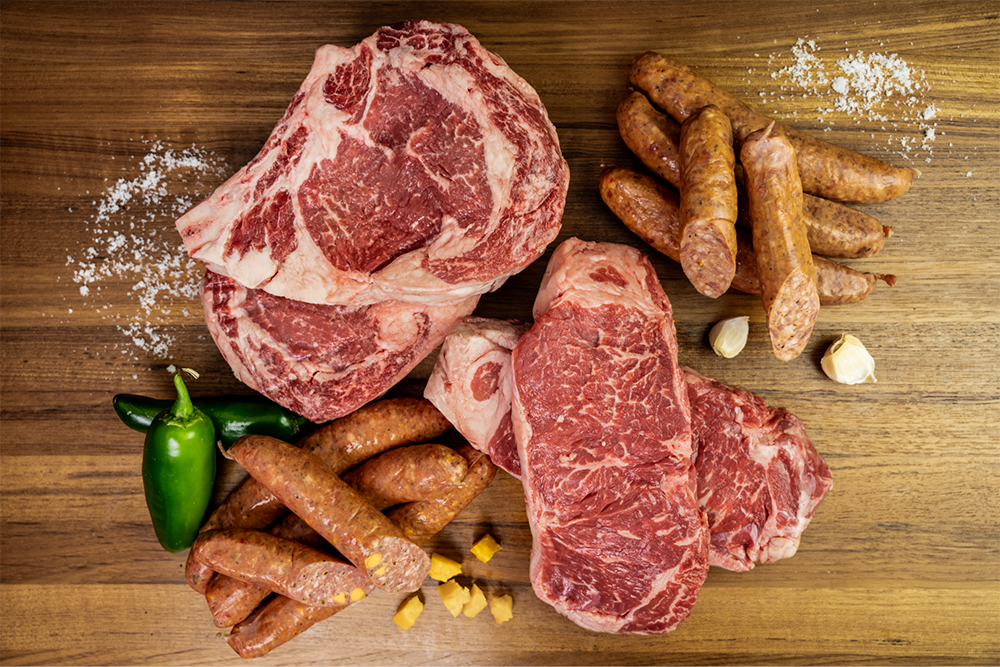Bagley Farms Meat Market Edwardsville IL: Your Relied On Resource for High-Quality Meats
Bagley Farms Meat Market Edwardsville IL: Your Relied On Resource for High-Quality Meats
Blog Article
Uncover the Art of the Butcher's Cut in a Modern Meat Market
In the ever-evolving landscape of modern meat markets, the butcher's cut has actually transcended its conventional origins, merging old-time craftsmanship with modern practices. What absolutely sets the modern-day butcher apart is their ability to build a deeper link in between consumers and the beginnings of their meat.
Evolution of Butchery Methods
The evolution of butchery methods mirrors a rich tapestry of technology and adaptation driven by innovations in technology, modifications in customer demand, and a much deeper understanding of meat scientific research. Historically, butchery was a craft passed down with generations, with approaches developed over centuries to take full advantage of return and flavor. The commercial change ushered in mechanization, transforming standard techniques and enabling massive handling.
The mid-20th century saw butchery techniques even more improved by scientific understandings into muscle mass biology and meat aging, improving both inflammation and taste. Technologies like vacuum product packaging and refrigeration extended item shelf-life, permitting butchers to expand offerings and improve quality assurance. This period also marked the rise of specialized equipment, such as band saws and meat slicers, which enhanced precision and efficiency in meat processing.

Computerized systems now assist in monitoring animal provenance and maximizing cuts to fulfill certain customer choices. Furthermore, a revival in artisanal butchery has actually emerged, blending typical skills with modern-day understanding to cater to customers seeking honest and sustainable meat alternatives.
Comprehending Meat Cuts
Comprehending the intricacies of meat cuts is vital for both butchers and customers seeking quality and worth. For butchers, specific cuts reflect skill and regard for the craft, making certain minimal waste and ideal return.

Comprehending muscle make-up is critical; muscle mass used more regularly by the animal tend to be harder and are best suited for slow food preparation methods, while less-used muscular tissues, like those discovered in the loin, are more tender and perfect for barbecuing or roasting. Familiarity with these differences encourages consumers to make enlightened options, boosting their culinary undertakings.
Choosing Quality Meat
Choosing the ideal meat entails more than just choosing an aesthetically enticing piece from the screen. The art of choosing top quality meat requires a discerning eye and understanding of certain attributes that signify freshness and excellence.
Second of all, take into consideration the marbling, which describes the white streaks of fat within best site the muscle. Appropriate marbling is an essential sign of inflammation and taste, as it thaws throughout food preparation, boosting the meat's juiciness. Bear in mind, greater marbling frequently correlates with superior high quality cuts, such as USDA Prime.
Structure is an additional essential factor; meat ought to feel solid to the touch, not slimed or extremely soft. Additionally, bear in mind the scent. Fresh meat ought to have a clean, neutral smell, without any type of sour or off-putting odors.
Matching Cuts With Cooking Methods

Alternatively, tougher cuts like brisket and chuck roast are rich in collagen, which damages down right into gelatin when cooked gradually. These cuts are optimal for braising or slow roasting, permitting the meat to tenderize over time and establish deep, intricate flavors. Similarly, cuts such as short ribs and pork shoulder get on well with slow-cooking approaches, where prolonged cooking times change their durable appearances right into delicious dishes.
Lamb shanks and oxtail, which need extended cooking to soften, are best prospects for cooking or sluggish simmering. These techniques coax out abundant, hearty flavors while preserving wetness. By recognizing the one-of-a-kind characteristics of each cut, cooks and home chefs alike can boost their cooking productions, making certain each recipe is both pleasing and unforgettable.
The Butcher's Function Today
Navigating the advancing landscape of the contemporary meat market, the butcher's role today expands beyond mere prep work of cuts. Contemporary butchers are culinary craftsmens, teachers, and supporters for lasting practices. They link the gap in between the farm and the fork by ensuring honest sourcing, understanding pet husbandry, and prioritizing openness in the supply chain. This shift shows the growing consumer need for high quality over amount, where provenance and animal well-being are critical.
In enhancement to crafting accurate cuts, butchers currently engage straight with consumers, providing cooking suggestions and tailoring choices to match private demands and preferences. Their knowledge in meat aging, marbling, and flavor accounts empowers consumers to make enlightened decisions, improving their cooking experiences. This individualized solution exemplifies the butcher's progressing role as a trusted consultant in the cooking area.
Moreover, butchers are essential in decreasing waste, using whole pets to develop diverse products such as sausages and stocks. This thorough approach not only appreciates the pet yet additionally aligns with contemporary sustainability goals. In this method, the modern-day butcher personifies both tradition and innovation, adapting to an ever-changing market while protecting the creativity and stability read more of their craft.
Verdict
The contemporary butcher's craft intricately weaves standard strategies with modern-day innovations, emphasizing sustainable practices and ethical sourcing. Proficiency in understanding diverse meat cuts and top quality signs equips butchers to supply enlightened suggestions, lining up certain cuts with ideal cooking methods. This competence not only elevates culinary experiences yet additionally enhances the connection between customers and the beginnings of their food. By recognizing historical practices while welcoming modern demands, the butcher's role continues to be essential in today's advanced meat market (bagley farms meat market edwardsville il).
Report this page